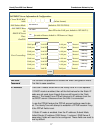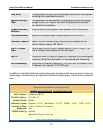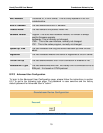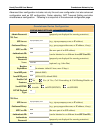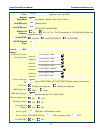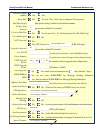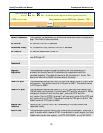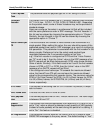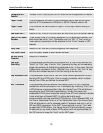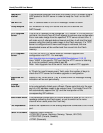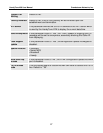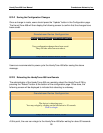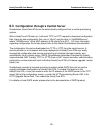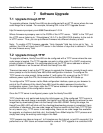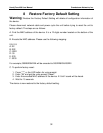
HandyTone-488 User Manual Grandstream Networks, Inc.
25
Unregister on
Reboot
Default is No. If set to yes, the SIP user will be unregistered on reboot.
Layer 3 QoS
This field defines the layer 3 QoS parameter which can be the value
used for IP Precedence or Diff-Serv or MPLS. Default value is 48.
Layer 2 QoS
This contains the value used for layer 2 VLAN tag. Default setting is
blank.
Use DNS SRV:
Default is No. If set to Yes the client will use DNS SRV for server lookup
User ID is Phone
Number
If the HandyTone ATA has an assigned PSTN telephone number, this
field should be set to “Yes”. Otherwise, set it to “No”. If “Yes” is set, a
“user=phone” parameter will be attached to the “From” header in SIP
request
Early Dial
Default is No. Use only if proxy supports 484 response
Dial Plan Prefix
Sets the prefix added to each dialed number
No Key Entry
Timeout
Default is 4 seconds.
Use # as
Send Key
This parameter allows users to configure the “#” key to be used as the
“Send” (or “Dial”) key. If set to “Yes”, pressing this key will immediately
trigger the sending of dialed string collected so far. In this case, this key
is essentially equivalent to the “(Re)Dial” key. If set to “No”, this “#” key
will then be included as part of the dial string to be sent out.
Use Random Port
This parameter, when set to Yes, will force random generation of both
the local SIP and RTP ports. This is usually necessary when multiple
HandyTone ATAs are behind the same NAT.
NAT Traversal
This parameter defines whether the HandyTone ATA NAT traversal
mechanism will be activated or not. If activated (by choosing “Yes”) and
a STUN server is also specified, then the HandyTone ATA will behave
according to the STUN client specification. Under this mode, the
embedded STUN client inside the HandyTone ATA will attempt to detect
if and what type of firewall/NAT it is sitting behind through
communication with the specified STUN server. If the detected NAT is a
Full Cone, Restricted Cone, or a Port-Restricted Cone, the HandyTone
ATA will attempt to use its mapped public IP address and port in all its
SIP and SDP messages. If the NAT Traversal field is set to “Yes” with
no specified STUN server, the HandyTone ATA will periodically (every
20 seconds or so) send a blank UDP packet (with no payload data) to
the SIP server to keep the “hole” on the NAT open.



